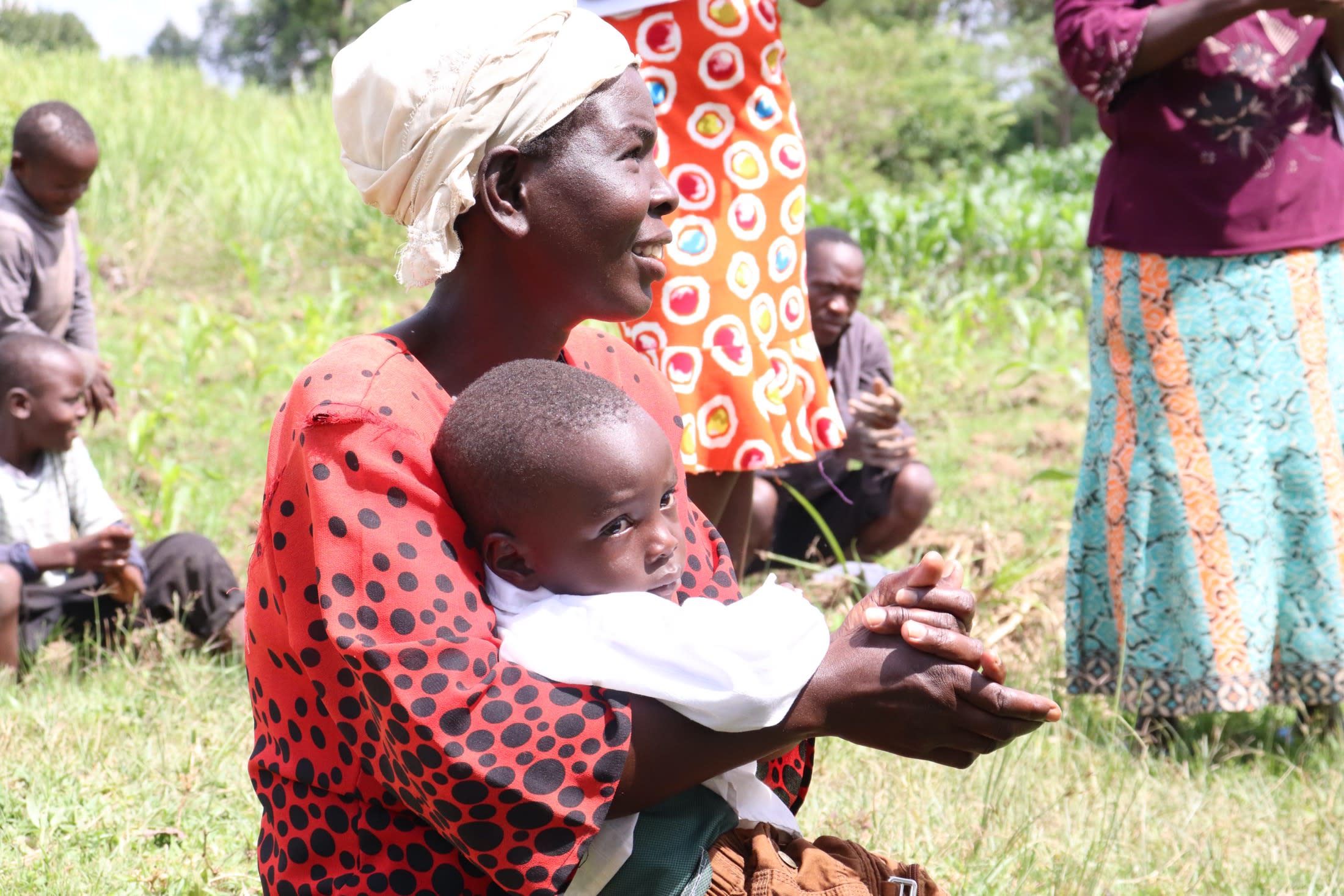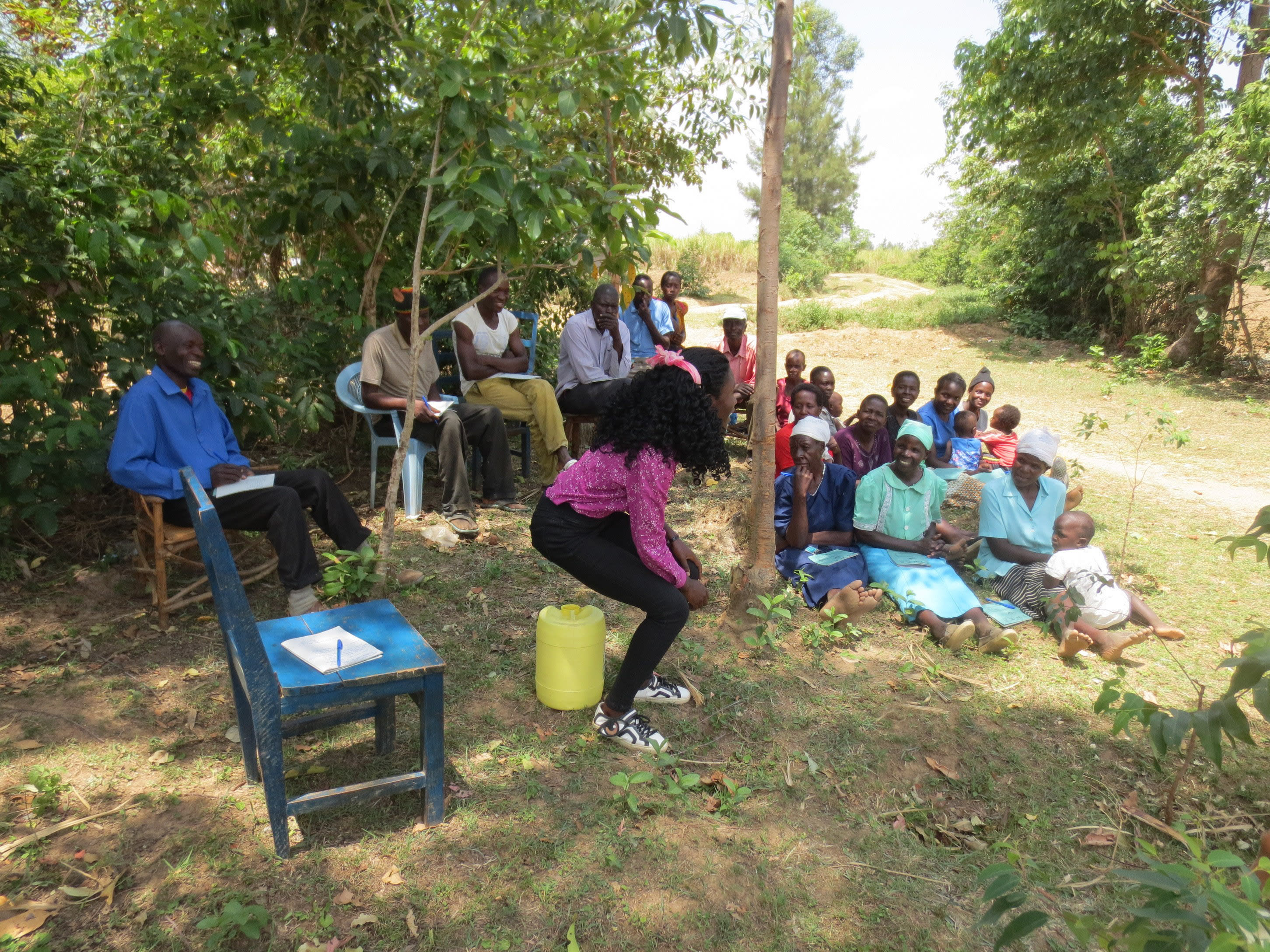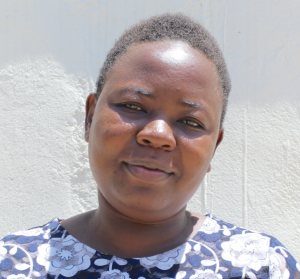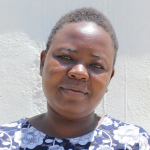June, 2020: COVID-19 Prevention Training Update at Mukhuyu Community, Kwawanzala Spring
Our teams are working on the frontlines of the COVID-19 pandemic. Join us in our fight against the virus while maintaining access to clean, reliable water.

Handwashing lesson
We are carrying out awareness and prevention trainings on the virus in every community we serve. Very often, our teams are the first (and only) to bring news and information of the virus to rural communities like Mukhuyu, Kenya.

Handwashing practice
We trained more than 18 people on the symptoms, transmission routes, and prevention of COVID-19. Due to public gathering concerns, we worked with trusted community leaders to gather a select group of community members who would then relay the information learned to the rest of their family and friends.

Handwashing
We covered essential hygiene lessons:
- Demonstrations on how to build a simple handwashing station
- Proper handwashing technique
- The importance of using soap and clean water for handwashing
- Cleaning and disinfecting commonly touched surfaces including at the water point.

Handwashing
We covered COVID-19-specific guidance in line with national and international standards:
- Information on the symptoms and transmission routes of COVID-19
- What social distancing is and how to practice it
- How to cough into an elbow
- Alternative ways to greet people without handshakes, fist bumps, etc.
- How to make and properly wear a facemask.

During training, we installed a new handwashing station with soap near the community’s water point, along with a sign with reminders of what we covered.
Due to the rampant spread of misinformation about COVID-19, we also dedicated time to a question and answer session to help debunk rumors about the disease and provide extra information where needed.

Showing how to properly wear a mask
We continue to stay in touch with this community as the pandemic progresses. We want to ensure their water point remains functional and their community stays informed about the virus.

Janet shows how to use the elbow for coughing
Water access, sanitation, and hygiene are at the crux of disease prevention. You can directly support our work on the frontlines of COVID-19 prevention in all of the communities we serve while maintaining their access to safe, clean, and reliable water.

June, 2019: Mukhuyu Community, Kwawanzala Spring Project Complete
Mukhuyu Community is celebrating its new protected spring, so celebrate with them! Kwawanzala Spring has been transformed into a flowing, safe source of water thanks to your donation. The spring is protected from contamination, five sanitation platforms have been provided for the community, and training has been done on sanitation and hygiene.
Spring Protection
Construction at Kwawanzala Spring was successful and water is now flowing from the discharge pipe.
"We are so grateful for this kind of work! Please help our neighbors protect their springs, too," said Mr. Wanjala.
"The water is so cold because it flows underground unlike the previous time when the water was hit by the sun directly when it was unprotected."

The Process
The community worked alongside our artisan to make this spring protection successful, gathering supplementary materials like sand and stones and making meals for the work team.

The spring area was excavated with jembes, hoes, and spades to create space for setting the foundation of plastic, wire mesh, and concrete.
After the base had been set, both wing walls and the headwall were set in place using brickwork. The discharge pipe was fixed low in place through the headwall to direct the water from the reservoir to the drawing area.

As the wing walls and headwall cured, the stairs were set and ceramic tiles were fixed directly below the discharge pipe.
The ceramic tiles installed under the discharge pipe protect the concrete from the erosive force of the falling water and beautify the spring. The process of plastering the headwall and wing walls on both sides reinforces the brickwork and prevents water from the reservoir from seeping through the walls and allows pressure to build in the collection box to push water up through the discharge pipe.

The concrete dried over the course of five days, during which a community member wetted the concrete to make sure it would dry without cracking. The source area was filled up with clean stones and sand and covered with a thick plastic membrane to eliminate any potential sources of contamination.

After the backfilling was done at the reservoir area, the community members were already waiting and ready with poles and nails to help the artisan fence in the area.
Sanitation Platforms
All five sanitation platforms have been installed and make wonderful, easy to clean latrine floors. These five families are happy about this milestone of having a latrine of their own. We will continue to encourage them to finish building walls and roofs over their new latrine floors as we visit for monitoring and evaluation.

New Knowledge
We maintained contact with an influential person in the community who informed his neighbors about the need for hygiene and sanitation training. He worked with everyone to find the best data and venue, too. He himself hosted the training at his homestead. Those who fetch water from the spring on a daily basis and even those who live far away were also informed about the event.

Training participants pose together for a group picture
The attendance was a sweet surprise! Since it was a weekday, we expected that a majority of women would be there. We didn't expect to get as many participants as we did, especially the men. There were a lot of men compared to other trainings we hold (men are normally out working). This was so humbling and we as a team were happy.
This large turnout was a result of good weather and goodwill among the community members. They were all ready and eager to learn about the project.
The training took place on a hot and humid day, forcing us to meet outside under the shade of trees. There was a slight breeze that kept the participants awake and attentive. The kids who were present could easily walk up and down and play without their parents getting worried about them. This venue was also good for taking pictures!

Handing out new notebooks and pens for community members to record what they learn
The participants were very active. They asked a lot of questions and participated in demonstrations when asked. Where they were doing something wrong, for example brushing teeth wrong, they admitted it and thanked the facilitators for teaching them the correct way.

Participants learned about:
– Leadership and governance for the spring committee
– Management and maintenance of the spring

We were able to walk over to the completed spring and teach about proper use and care
– Family planning
– Personal hygiene, highlighting handwashing and dental hygiene
The facilitator began by asking the participants if they wash their hands, and they said they do so before eating. When asked if they really knew how to thoroughly wash their hands, they admitted that they don't know. The facilitator first requested a man to wash his hands, then a woman, then some children. The other participants were requested to keenly observe how they wash their hands. The children were the most interesting: They poured water directly in a basin and began dunking their hands at the same time.

Children demonstrate how they normally wash their hands
The facilitator asked the participants if that's how their daily routine of washing hands is, and they all confirmed. The facilitator showed the water in the basin to the participants. They were surprised that the water was extremely dirty. The facilitator picked one of the kids and helped them demonstrate the proper way. Mothers were urged not to leave their kids to wash their hands on their own, either. There are 10 handwashing steps and the facilitator allowed everyone to practice them repeatedly until they got the concept. She advised them to wash their hands using running water and taught them how to make a leaky tin handwashing station.

Demonstrating the proper way to wash hands
– Environmental hygiene
– Waterborne and water-related disease, along with water handling and water treatment methods
Participants were urged to clean their water containers regularly. In addition to this, they were told to always carry containers with lids or covers. Women were discouraged from sitting on top of their containers as they rest. Bearing in mind that most of the participants live close to the spring, they were urged to use 5-liter jerrycans to store drinking water so that they'd be refreshing their supply on a daily basis. To minimize water pollution, the participants were discouraged from allowing their little children to draw water from large containers, since they often insert their hands in the water. At this point, the participants unanimously agreed to handle water with care to prevent the illnesses previously discussed.

Don't use your water containers as seats!
"I wish to thank our teachers for informing us about how to live a healthy life. We promise to live by what we have acquired and also share with those who missed out," said Mrs. Siyuyu.
Thank You for making all of this work possible!


 Protected Spring
Protected Spring
 Rehabilitation Project
Rehabilitation Project













































